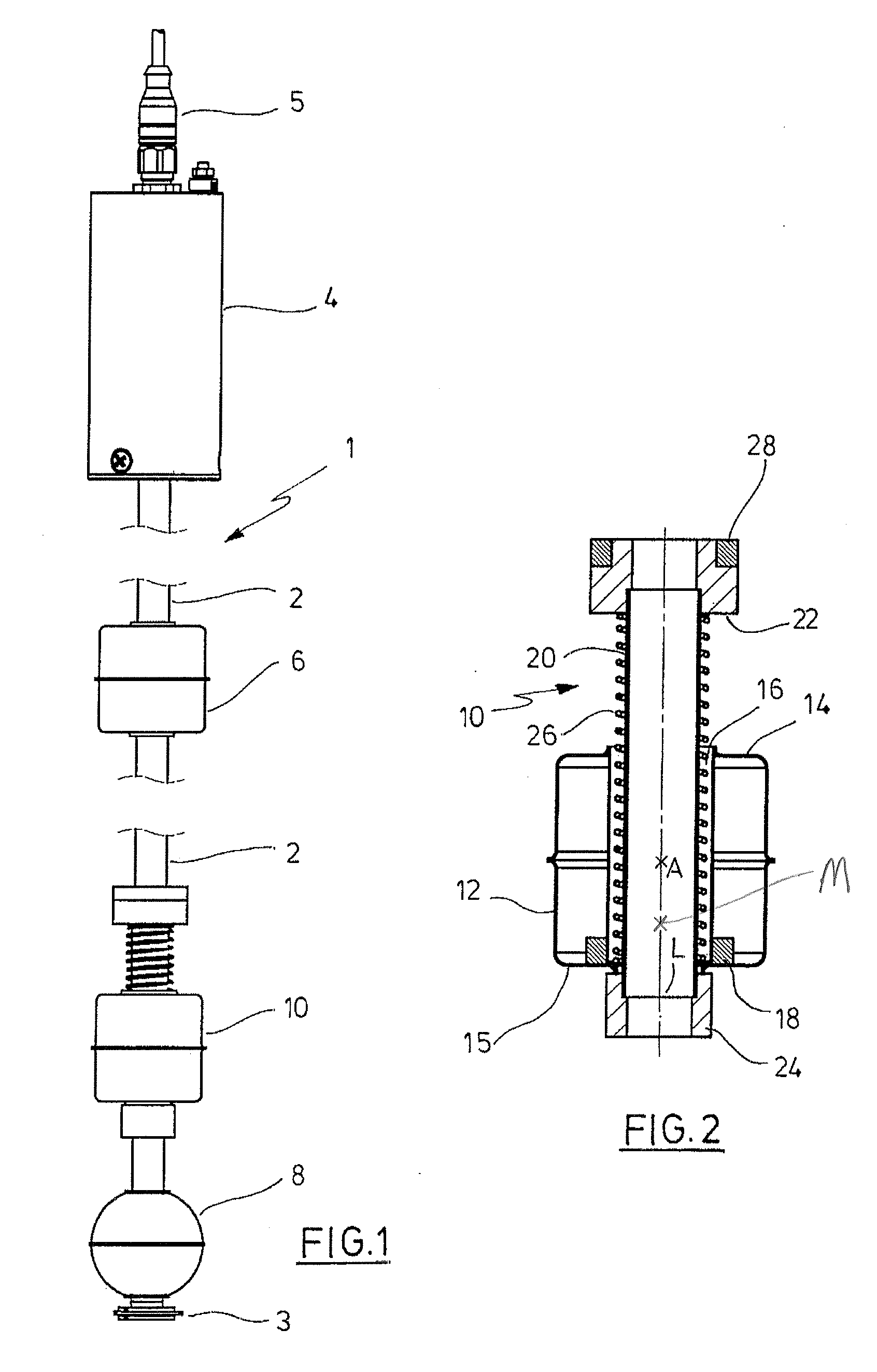Device and method for determining the density of a fluid
a density and fluid technology, applied in the direction of liquid/fluent solid measurement, level indicator with buoyant probe, engine lubrication, etc., can solve the problems of inaccurate and unreliable, complex and expensive differential pressure sensor accuracy in the per mill range, not suitable for continuous measurement with changing levels or filling levels, etc., to improve the density-measuring device, improve the accuracy, and improve the accuracy
- Summary
- Abstract
- Description
- Claims
- Application Information
AI Technical Summary
Benefits of technology
Problems solved by technology
Method used
Image
Examples
second embodiment
[0060]Turning to FIG. 4, an alternative density-determining device 30 is constructed in accordance with the present invention. In the alternative density-determining device 30, the top and bottom are essentially interchanged compared to the exemplary embodiment according to FIGS. 2 and 3. Furthermore, a buoyant body 32 is heavier so that it would not rise upward without support. However, the helical spring 34 presses from below so that an equilibrium of the explained type is established again, with the position of the magnet 36 (or the difference between the position of the magnet 36 and that of the reference magnet 38) being a measure of the density which is to be determined.
[0061]In the second embodiment, the buoyant body 32 must therefore also be able to move, and the spring 34 acts on the buoyant body 32 above the centre A of buoyancy. In addition, the magnet should be arranged in such a way that the centre of mass M of the buoyant body 32 is below the centre A of buoyancy of th...
third embodiment
[0062]Turning to FIG. 5, an alternative density-determining device 40 is constructed in accordance with the present invention. In the illustrated embodiment, the device 40 includes a plurality of buoyant bodies 42, a plurality of springs 44, and a plurality of magnets 46. The buoyant bodies 42, with assigned springs 44 and magnets 46, are arranged at different levels of the magnetostrictive position-measuring system of a storage tank. As discussed previously, this makes it possible to determine the density of the fuel at different levels. In addition, embodiments relating to the application possibilities, in particular in the region of a fuel filling station, can also be found there.
PUM
| Property | Measurement | Unit |
|---|---|---|
| density | aaaaa | aaaaa |
| elastic deformation | aaaaa | aaaaa |
| buoyancy force | aaaaa | aaaaa |
Abstract
Description
Claims
Application Information
 Login to View More
Login to View More - R&D
- Intellectual Property
- Life Sciences
- Materials
- Tech Scout
- Unparalleled Data Quality
- Higher Quality Content
- 60% Fewer Hallucinations
Browse by: Latest US Patents, China's latest patents, Technical Efficacy Thesaurus, Application Domain, Technology Topic, Popular Technical Reports.
© 2025 PatSnap. All rights reserved.Legal|Privacy policy|Modern Slavery Act Transparency Statement|Sitemap|About US| Contact US: help@patsnap.com



